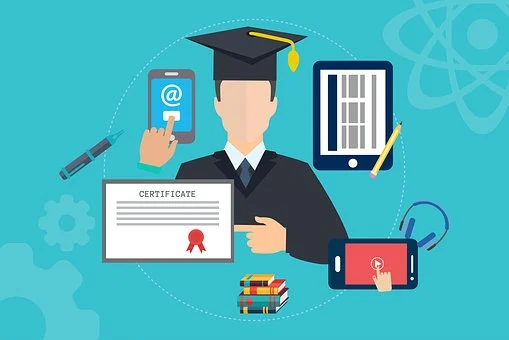A Guide on Humanistic Learning Theory in Education

Humanistic learning theory in education is a pedagogical approach that emphasizes the importance of the individual student’s experience, self-actualization, and personal growth. This theory places the learner at the center of the educational process, focusing on their emotional, social, and cognitive development.
By recognizing the unique needs and potential of each student, humanistic learning theory aims to create a supportive and nurturing learning environment that fosters creativity, critical thinking, and intrinsic motivation.
In this article, we will explore the key principles of humanistic learning theory and its implications for modern education.
Read: What are Humanist Learning Theories?
Humanistic Learning Theory
Humanistic learning theory in education is rooted in the work of psychologists such as Abraham Maslow and Carl Rogers. Maslow’s hierarchy of needs and Rogers’ person-centered approach form the foundation of this theory, which views education as a means of self-discovery and personal growth.
At the core of humanistic learning theory is the belief that every individual has the innate drive to learn and grow, and that education should facilitate this process by providing a supportive and empowering environment.
Key Principles of Humanistic Learning Theory
1. Student-Centered Approach: Humanistic learning theory places the student at the center of the educational experience, focusing on their unique needs, interests, and abilities. Teachers act as facilitators, guiding students in their learning journey rather than dictating knowledge.
2. Self-Actualization: A central concept in humanistic learning theory, self-actualization refers to the realization of one’s full potential. Educators strive to create opportunities for students to explore their interests, develop their talents, and achieve personal fulfillment.
3. Holistic Development: Humanistic learning theory emphasizes the holistic development of the individual, encompassing not just academic growth but also emotional, social, and moral development. Education is seen as a tool for nurturing well-rounded individuals.
4. Intrinsic Motivation: Unlike traditional educational approaches that rely on external rewards and punishments, humanistic learning theory promotes intrinsic motivation. Students are encouraged to pursue learning for its own sake, driven by curiosity, passion, and a desire for personal growth.
5. Positive Relationships: Building positive relationships between teachers and students is essential in humanistic learning theory. Trust, respect, and empathy form the foundation of these relationships, creating a supportive and nurturing learning environment.
Implementing Humanistic Learning Theory in Education
Incorporating humanistic learning theory into educational practices requires a shift in mindset and pedagogical approach. Here are some strategies for implementing this theory in the classroom:
1. Personalized Learning: Tailoring instruction to meet the individual needs and interests of students is key to humanistic learning theory. Teachers can use differentiated instruction, project-based learning, and collaborative activities to engage students in meaningful ways.
2. Promoting Autonomy: Giving students a sense of autonomy and control over their learning fosters independence and self-motivation. Providing choices, encouraging self-directed learning, and allowing for student input in decision-making can empower learners.
3. Fostering Creativity: Humanistic learning theory values creativity as a means of self-expression and problem-solving. Teachers can incorporate arts, music, drama, and other creative outlets into the curriculum to stimulate students’ imagination and critical thinking skills.
4. Emphasizing Reflection: Reflection is a crucial component of humanistic learning theory, allowing students to make sense of their experiences, set goals, and monitor their progress. Encouraging journaling, self-assessment, and peer feedback can promote reflective practices.
Benefits of Humanistic Learning Theory in Education
Embracing humanistic learning theory in education offers numerous benefits for both students and educators:
1. Increased Engagement: By focusing on the individual student and their interests, humanistic learning theory promotes higher levels of engagement and motivation in the learning process.
2. Enhanced Self-Esteem: Providing opportunities for self-discovery and personal growth can boost students’ self-esteem and confidence, leading to a positive self-concept.
3. Improved Learning Outcomes: When students are actively involved in their learning and feel a sense of ownership over their education, they are more likely to achieve academic success and develop a lifelong love of learning.
4. Positive School Climate: Creating a supportive and inclusive learning environment based on humanistic principles can improve school climate, foster positive relationships, and enhance overall well-being.
What are the Criticisms of Humanistic Learning Theory
The criticisms of humanistic learning theory include:
1. Subjectivity and Vagueness: Critics argue that humanistic theories are subjective and vague, lacking objectivity for studying and measuring humanistic behaviors and patterns.
2. Individualism Leading to Selfishness: The emphasis on individualism in humanistic approaches is criticized for potentially promoting selfishness and moral decay, as individuals may prioritize self-betterment over considering the impact of their choices on others.
3. Naivety and Ignoring Human Capacity for Evil: Critics suggest that humanistic theories are naive and fail to acknowledge the human capacity for evil. In the face of threats like terrorism, humanistic theories may either deny the existence of such threats or fall into despair, questioning the effectiveness of addressing evil.
How Does Humanistic Learning Theory Address Individual Differences
Humanistic learning theory addresses individual differences by emphasizing the importance of freedom, autonomy, and self-directed learning for students.
This theory recognizes that each learner is unique, with diverse characteristics, interests, and motivations, and therefore advocates for student-centered approaches that allow individuals to set their own goals, make choices in their learning, and evaluate their progress independently.
By promoting intrinsic motivation, positive emotions, and self-evaluation, humanistic learning theory acknowledges and respects the individuality of each student, fostering a learning environment that values and accommodates diverse learning styles and preferences.
What is the Role of the Teacher in Humanistic Learning Theory
In humanistic learning theory, the role of the teacher is that of a facilitator and role model, focusing on guiding students in their learning journey rather than being the sole source of knowledge. The key responsibilities of teachers in humanistic learning theory include:
1. Teaching Learning Skills: Emphasizing the development of learning skills to help students make informed choices about their learning methods and strategies.
2. Providing Motivation: Creating engaging and exciting learning activities to motivate students and foster a sense of curiosity and enthusiasm for learning.
3. Offering Choices: Allowing students to make choices about their learning tasks and subjects, promoting autonomy and self-directed learning.
4. Facilitating Group Work: Creating opportunities for collaborative group work to encourage peer interaction, observation, and self-evaluation among students.
Humanistic learning theory in education offers a human-centered approach that values the unique potential of each individual student. By prioritizing self-actualization, holistic development, and intrinsic motivation, this theory aims to create a nurturing and empowering learning environment that fosters creativity, critical thinking, and personal growth.
Implementing humanistic principles in education can lead to increased student engagement, improved learning outcomes, and a positive school climate where every learner can thrive.






